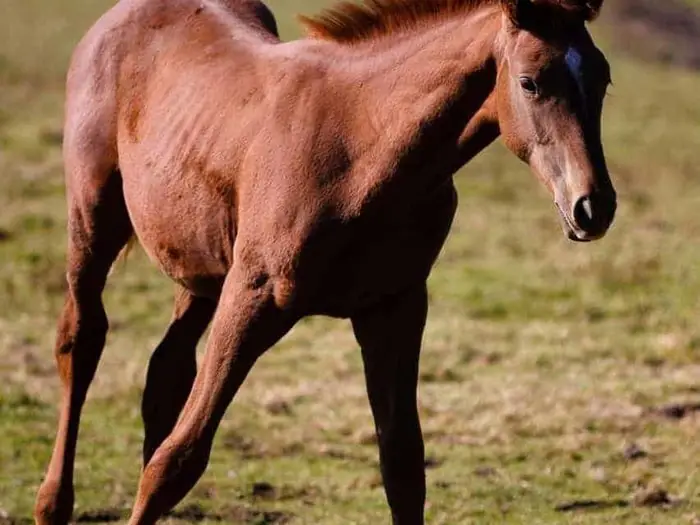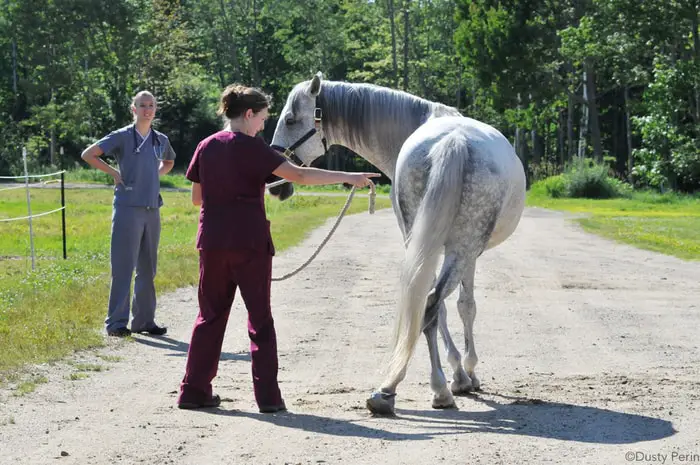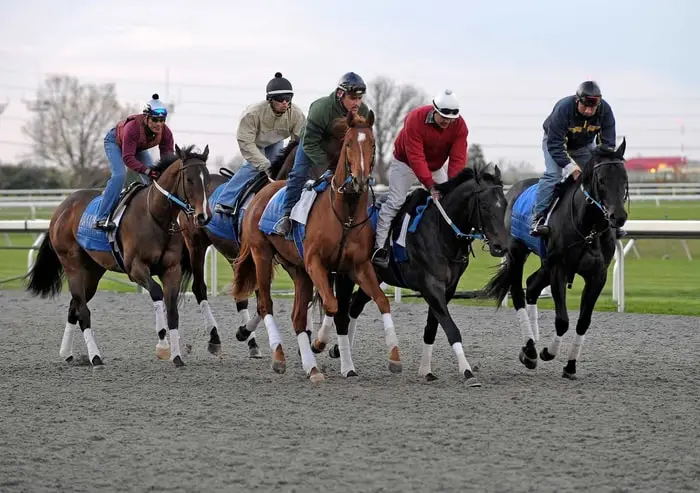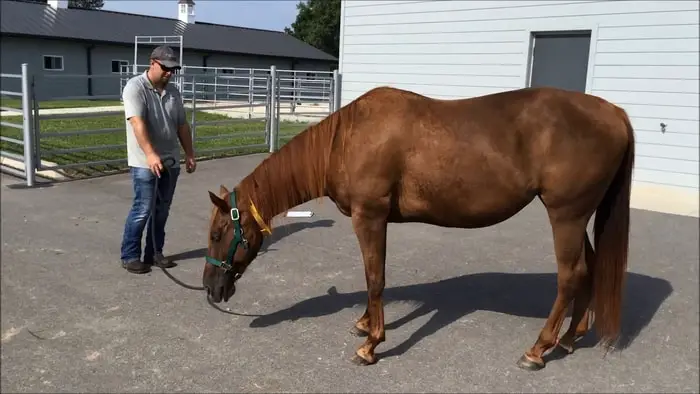Wobbler in horses or cervical vertebral malformation(CVM) is a rare disease of horses present with neurologic symptoms. CVM the neurologic symptoms occur secondary to developmental abnormalities of the cervical column. The development of Wobbler in horses has been linked to osteochondrosis, they occur in similar populations of horses, and the pathologic changes in the vertebral facets and the vertebral epiphyses and metaphyses resemble osteochondrosis. The spinal cord compression occurs following recurrent subluxation at the articulation of vertebral bodies or by the enlargement of vertebral facets and soft tissue proliferation.
Important Information About Wobbler in Horses
The other name of the disease is Cervical Vertebral Malformation (CVM), Vertical Stenotic Myelopathy, Wobblers Syndrome, Wobblers, or Wobblers disease. The disease is a common cause of ataxia in horses. It has been reported worldwide and affects any breed of horse, but particularly in Thoroughbreds. Owners may report that young animals appeared “clumsy” or gangly in the hind end. An accident or injury to the neck is sometimes, but not always, in history. Mild to moderately affected horses show symmetrical ataxia with circumduction of the hind legs, especially when the animal is made for walking in small circles.

Causes of Wobbler in Horses
The exact cause of Wobblers in Horses is probably multifactorial. In horses, familial predisposition is high dietary energy intake, and trauma to the neck probably all play a role, as young, large, fast-growing animals (often males) are affected. It is considered that the syndrome is caused by genetic predisposition.
Epidemiology of Wobblers Syndrome
The disease is commonly diagnosed in horses 1-3 years of age. Recent research indicates that the radiographic and neurologic signs can be present in affected foals as young as 2-3 mo of age. Wobblers are reported all over the world and attack various breeds of horses.
What are the Symptoms of Wobblers In Horses?
The neurologic signs result from spinal cord compression due to vertebral malformation. It is characterized by stenosis of the vertebral canal, degeneration of the articular facets, vertebral malalignment, and proliferation of surrounding soft tissue. The disease may be a form of a developmental orthopedic disease; that is, it is related to rapid skeletal growth in genetically predisposed horses. Many of the cervical vertebrae changes are similar to the manifestations of osteochondrosis and epiphysitis, as seen in the limbs.

Proprioceptive deficits, toe dragging, hypometria, and varying degrees of weakness in the hind end are also present. Occasionally, the signs can be severe and render the horse recumbent. Wobblers may occur after a traumatic incident that exacerbated the pre-existing cord compression. Spasticity and proprioceptive deficits of the forelimbs may be apparent but are often difficult to perceive without extensive testing.
Forelimb deficits are usually one grade less in severity than hindlimb deficits. The “slap test” for laryngeal adduction may be absent, but there are no cranial nerve deficits. Neck pain can be present, but it is difficult to determine.
Diagnosis of Wobblers Syndrome in Horse
A definitive diagnosis of CVM in a horse with neurologic symptoms requires radiographic evidence of reduced vertebral canal diameter and static or dynamic compression of the spinal cord. The latter requires myelography. Accurate determination of which sites are involved is essential if surgical treatments are to be considered.

Surgical Treatment of Wobbler in Horses
Two surgical procedures have been described, ventral cervical vertebral fusion and partial dorsal laminectomy. Cervical vertebral fusion may be performed for both static and dynamic compression of the spinal cord. It stabilizes the vertebral articulation so that dynamic compression is abolished; a reduction follows this in the size of the vertebral facets and soft tissue proliferation. Dorsal laminectomy is usually reserved for horses with static spinal cord compression and provides immediate spinal cord decompression.
Complications following vertebral fusion occur less frequently than with dorsal laminectomy. The neurologic symptoms improve in the majority of horses operated on by these procedures by at least one grade; however, the recovery period may be protected.
Medical Treatment of the Cervical Vertebral Malformation (CVM)
Treatment depends on the specific etiology of the disease, and you can perform surgical treatment, drug therapy, and change in the horse’s management. Non-steroidal anti-inflammatory drugs (NSAIDs), corticosteroids, and stall rest may provide stabilization and temporary pain relief in an animal with acutely exacerbated signs, but the spinal cord compression persists. Care should be taken to confine an animal treated with anti-inflammatories, because their analgesic effects may encourage inadvertent reinjury of the neck.

Prognosis of CVM
The prognosis is best when surgery is performed on young, recently affected horses in which only one vertebral articulation is involved. Controversy still surrounds Wobbles’s surgical treatment because of questions concerning the safety of the rider and implications of inheritance in the pathogenesis of this disease. It cannot be overemphasized that surgical treatment you should only be performed by an accomplished surgeon after an accurate diagnosis by an experienced equine neurologist.
Prevention and Control of Wobblers in Horses
Measures designed to reduce the incidence of DOD must be directed at the etiology as understood; therefore, such measures cannot always be specific. Although the influence of inheritance on the expression of DOD is unknown, it would be prudent to avoid breeding to horses that have shown the propensity to produce DOD foals. Foals up to 1 yr of age should be allowed to exercise freely for at least 12 hr/day, and forced exercise should be avoided.
Strict guidelines concerning diet are complicated because of the different types and quality of feed available and because individual foals respond differently to different diets. The best recommendation is to have a reliable laboratory analysis of feeds you should perform, followed by consultation with a recognized equine nutritionist. It would be better if you supply a balanced and adequate diet to pregnant mares. Moreover, it is crucial always to avoid over-supplementation of mineral/vitamin mixes.
Concluding Remarks on Wobblers Disease
Horses showing Wobblers Syndrome may become so ataxic that they become a danger to themselves and horse handlers. Humane destruction is then advised for the safety and security of horses and humans. Though the disease is rare and complicated, the knowledge I have shared in my article will help you take preventive measures early. I think you will be benefitted from my article and share it with your friends.